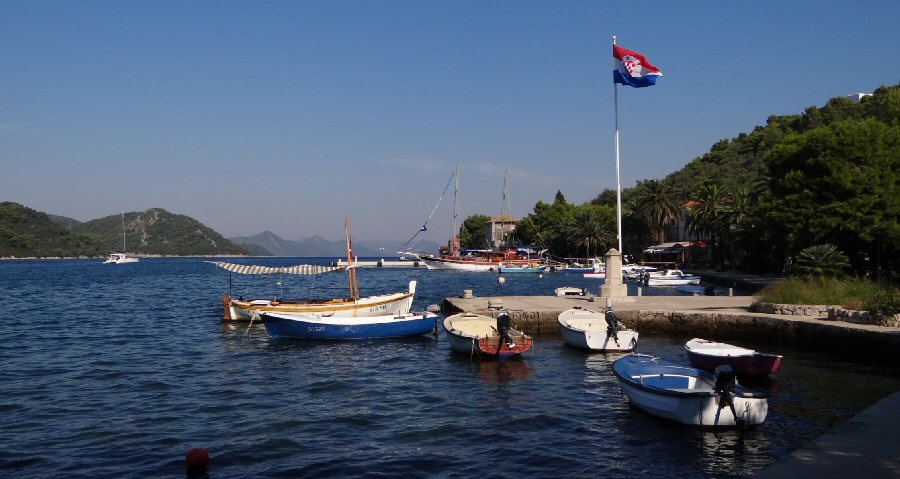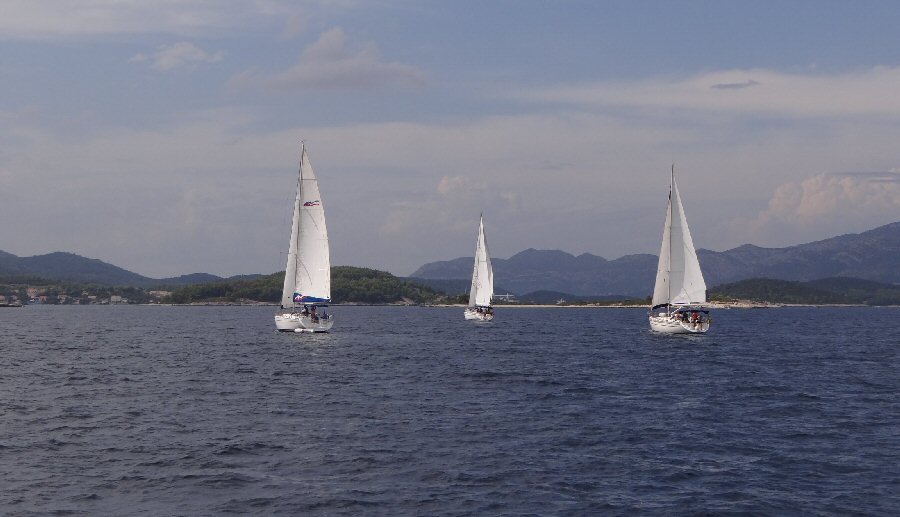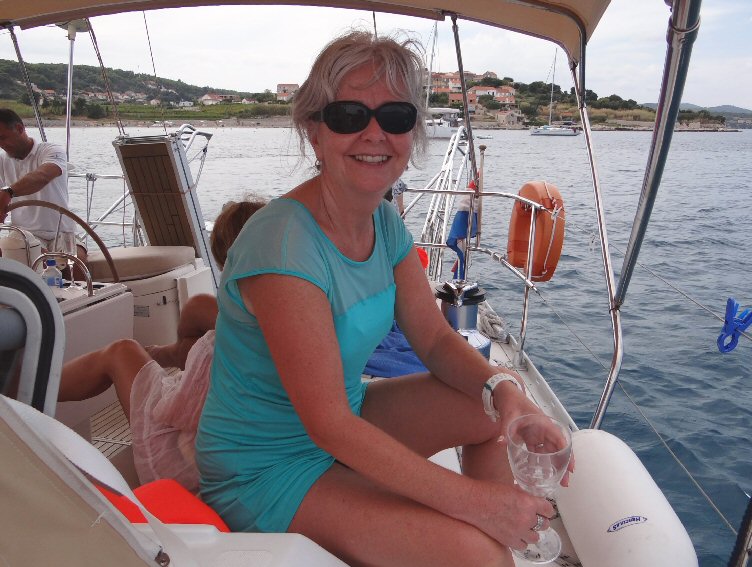| Dave and
Carol Hansman report on Cruising the Dalmatian Coast of Croatia September 2013 last updated: 21 October 2013 - supplementary pics of Dubrovnik + sailing to follow soon ... |
|
Back in May of this year, we received an
email from friends in Sydney, Australia that simply said “We are going
sailing for a week in Croatia. Would you like to come with
us?” The answer took about a much thought as saying yes to
another glass of great wine!
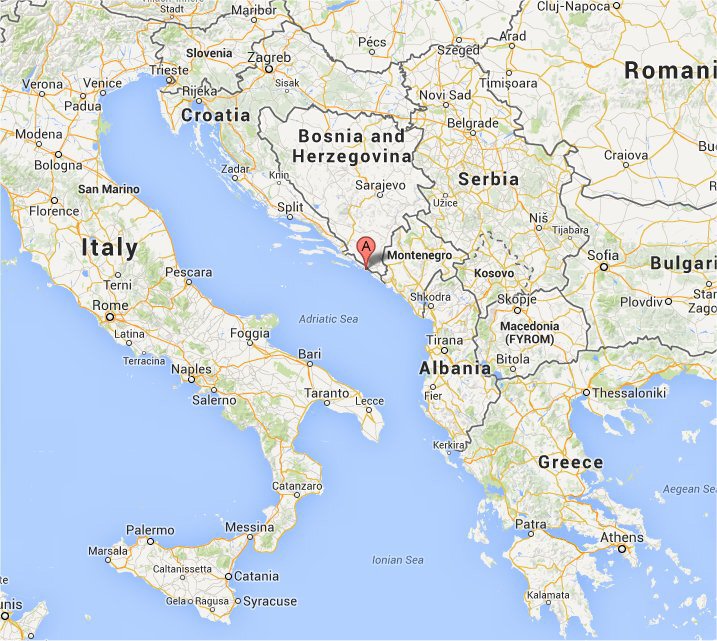 So,
in early September we found ourselves in Dubrovnik, Croatia having
flown there from Toronto by way of Paris, preparing to sail the islands
of the Dalmatian Coast. Focusing on the six days we were on the
sailboat, we would like to share with you just a few of the more than
1500 photos we took during our two weeks in Croatia, a tour that
included side-trips to Mostar in Bosnia-Herzegovina and the Bay of
Kotor in Montenegro.
Dubrovnik is referred to as “The Pearl of the Adriatic” and with good reason. The place is ancient, with archeological excavations showing people were here at times pre-dating the Romans, has fantastic Venetian style architecture, maintains a picture perfect, completely walled “Grad” (Old Town) that is a World Heritage site and a magnet for tourists from all over the world. The Grad is invaded daily by people coming to Dubrovnik by way of cruise ships. They come and go on a daily basis but Carol and I spent 6 days there to try to get to know the place more intimately. See: http://www.dubrovnik.com/ But back to sailing…..  The islands in southern Dalmatia - click here for larger image 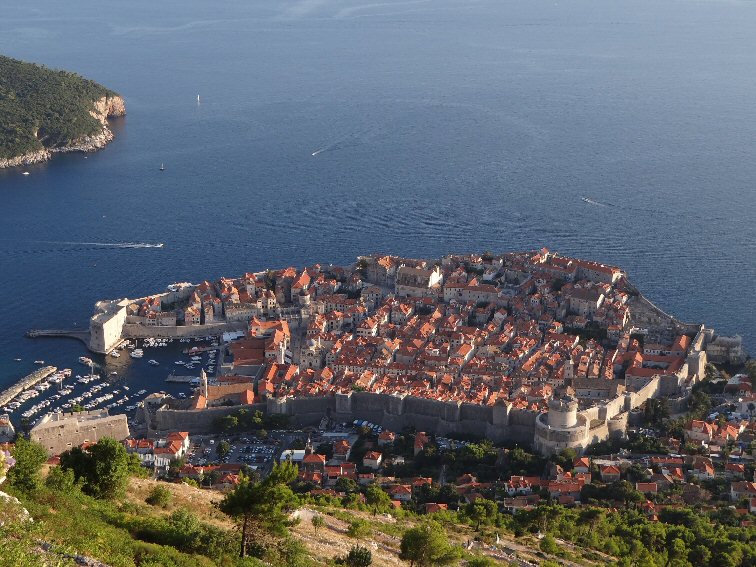 View of the old town of Dubrovnik - click here for larger image 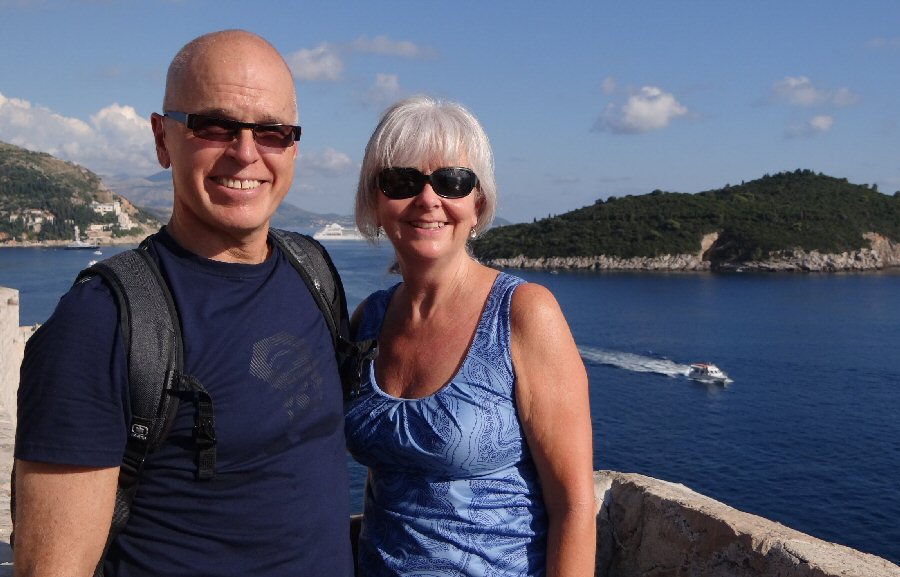 on the city walls of old-town Dubrovnik 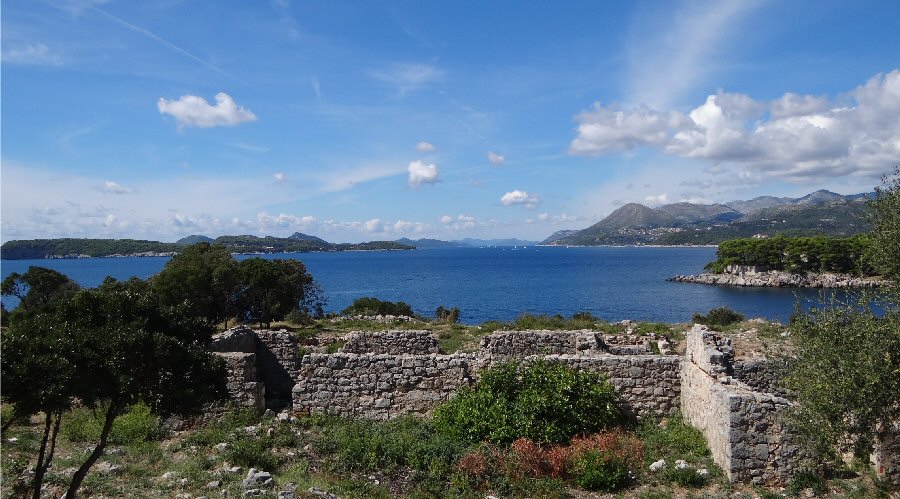 Dalmatia coast looking north from Dubrovnik - click here for larger image Here is some background on Croatian sailing. What makes the Dalmatia area so popular are the more than 1280 islands, only about 80 of which are populated. Add to this the fantastic, high saline waters of the Adriatic and the long and extremely interesting history (Phoenician, Illyrian, Roman, Byzantine, Venetian along with the Ottoman empire just over the mountains for centuries). People come from all over the world to sail here in boats large and small – some to seek the quiet beauty and solitude of the many gorgeous, uninhabited islands while other come to enjoy the beautiful scenery and experience the many and varied seaside villages and small cities like Dubrovnik and Split. On this trip, we were in the latter group. Our plan was to sail for about 4 hours each day, and then spend of the rest of the time exploring the islands and villages we found along the way. We boarded
our chartered 52 ft Jeanneau at the small port village of Zaton, just a
short taxi ride from Dubrovnik. Named Stane, she was
fully stocked with food, wine, beer and other “necessities” for the
time ahead. We had pre-ordered these essentials but were also
aware that the islands we would be visiting had a number of small
fishing villages where would could stop in the evening and enjoy the
local “bounty”.
Proceeding from Zaton, our first stop was
to be on the island of Šipan (pronounced “She-PAN”) and the village of
Šipanska Luka. Luka is the Croatian word for “port”. Here
we had our first taste of what the wonderful villages had to offer in
the way of fresh seafood meals. The fish could be seen in the
water immediately beside us as we ate at a lovely little family
restaurant (known as a “Konoba”).
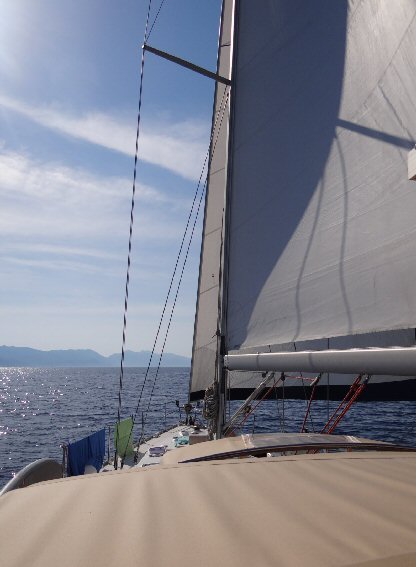 Under sail on the Adriatic The next morning, we headed
from the island of Šipan northwesterly, under southerly breeze.
This is when it became very apparent that sailing the 52’ Jeanneau was
as similar to Wayfarer sailing as driving a large motorhome is to the
experience of driving a sports car! Rigged virtually the same but on a
bigger scale, the boat was a responsive as a slug but it sure had lots
of comfortable space inside and out, lots of storage for food and
drink, four large and comfortable berths each with their own WC – okay,
compromises must be made! Anyway, onward we went to the south end
of the island of Mljet (pronounced “mull-jet”, more or less, if you
pronounce the “je” part as if French) and overnighted at the small
fishing village of Prožurska Luka where we discovered, with help, a
lovely restaurant amidst the quaint houses that are reputed to be more
than five centuries old.
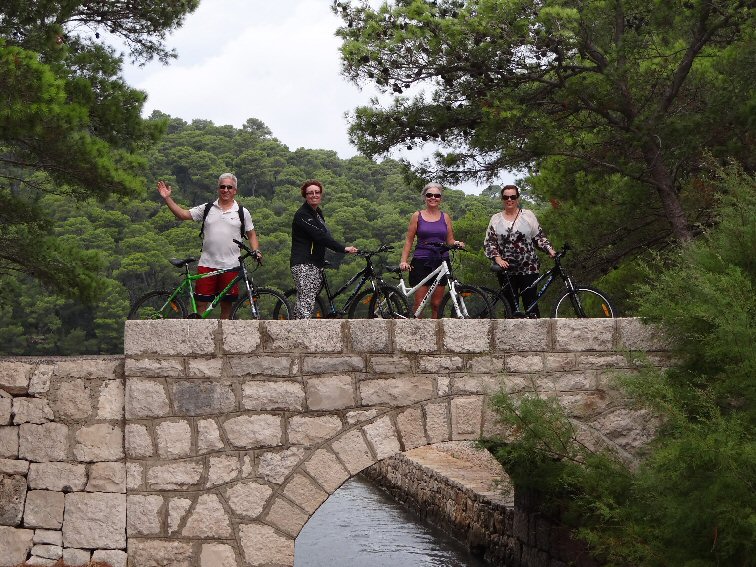 Bike tour of National Park on island of Mljet 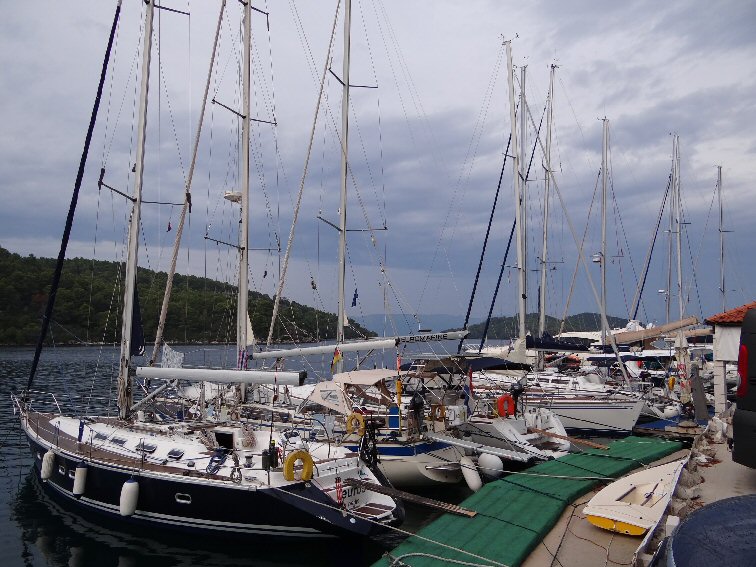 Boats moored at Polače Mljet is a
large island with a national park on the north end, so the next day we
sailed up the length of the island to a seaside village within the park
boundaries called Polače (“poe-LA-chay”). Here we rented mountain bikes
to explore a portion of the large park, some small villages, and an old
monastery, taking in the gorgeous Dalmatian scenery as we did so.
Equally interesting, for me, was the large number of maxi sail boats
and mega yachts that were in that area. One was the +500’ super
yacht “Eclipse” which we sailed completely around to check it
out. It made our 52’ boat feel like a dinky toy. From Mljet, we
headed north on a westerly wind of about 12 to 15 knots, with the swell
from the open Adriatic making life below deck interesting and forcing
us to keep a firm grip on our cans of beer or glasses of wine.
As
we approached the east end of the island of Korčula (roughly pronounced
“COR-chu-la”), we entered the strait that separates the big island from
the mainland peninsula of Pelječac, which is home to two of
the region’s best wine-producing locations – the Dingač and
Postup. We fell in love with the Plavic Mali wines
from the
Dingač.
The strait itself is well known as a great windsurfing location as the
protected area is free of swells but the winds reliable and “sweet” for
sailing and boarding alike.
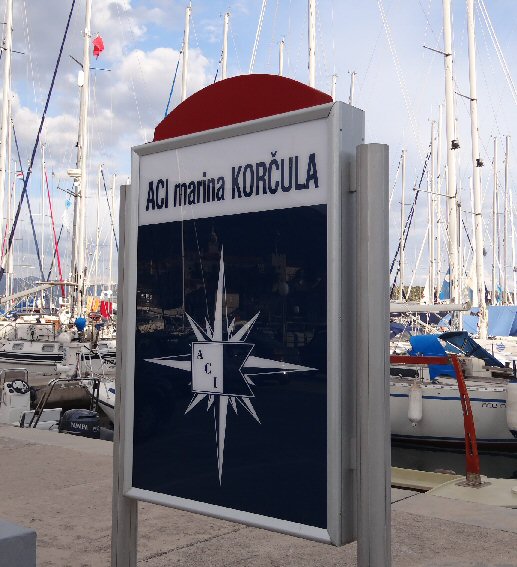 Overnight stop at Korčula the birthpalce of Marco Polo 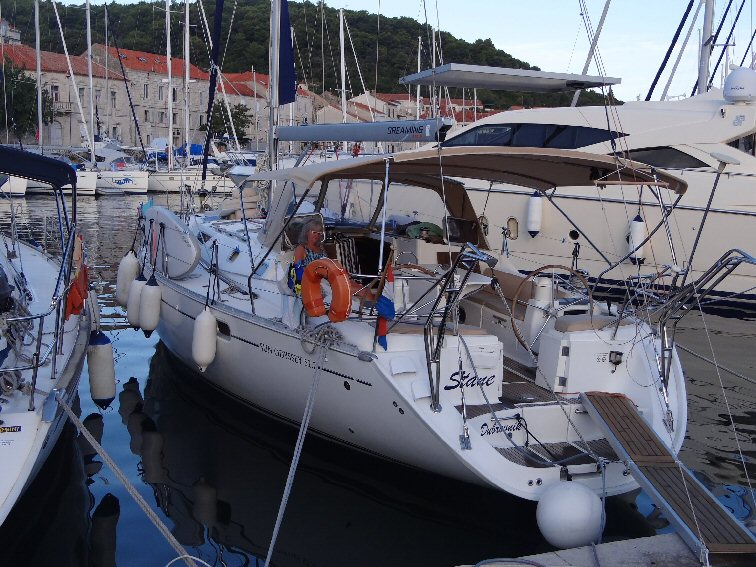 Relaxing on board Stane at Korčula The city of Korčula
itself is famous
for being the birthplace of Marco Polo.
Although we doubt there would be much there now that old Marco Polo
would recognize, we suspect he would still feel at home in the “Grad”,
the walled old town section of Korčula. The
harbour is excellent and it was packed with boats. We were the 2nd-last
boat allowed entry to the harbour that evening, so one must be sure to
get to such place early rather than later. But we made it and
used the time and facilities to advantage (showers in the marina
building, a nice change from the mini showers on Stane),
touring the
old town, and dinner at a lovely restaurant called the Marinero.
Korčula was the furthest extent of our trip north around the islands. Many weeks, indeed many months, are required to do real justice to the exploration of the Croatian coast. We were told that it is very common for foreigners to bring their boats to Croatia, choose a spot such as Split from which to base themselves, and keep their boats there for 2 or 3 seasons until they have thoroughly explored the region. 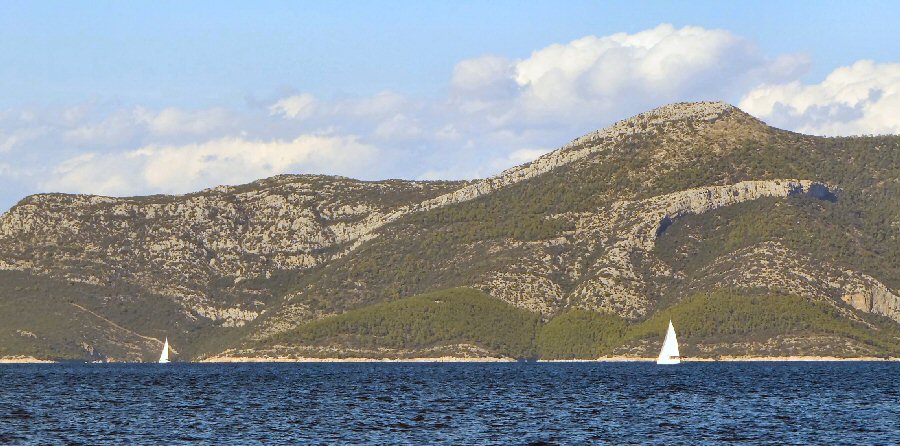 The mountains along the Dalmatian Coast 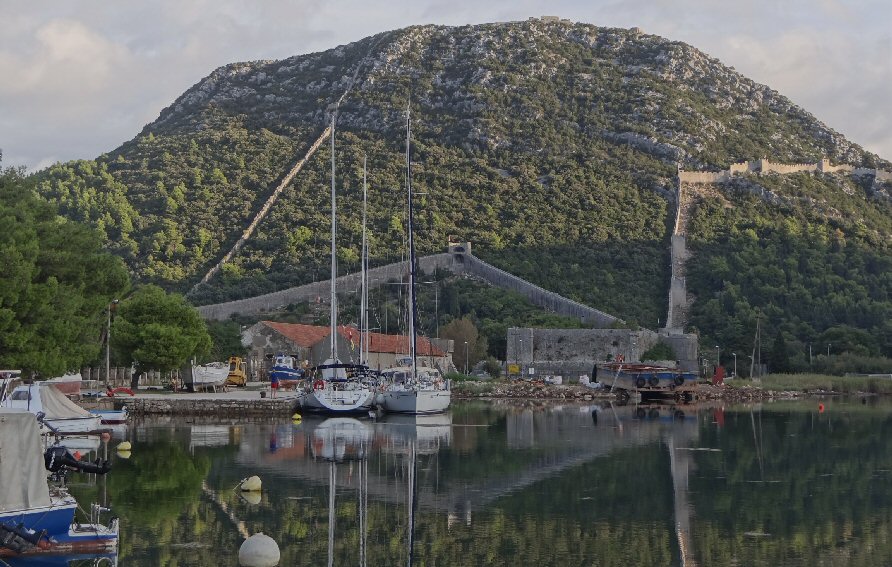 The Great Wall of Croatia at Ston 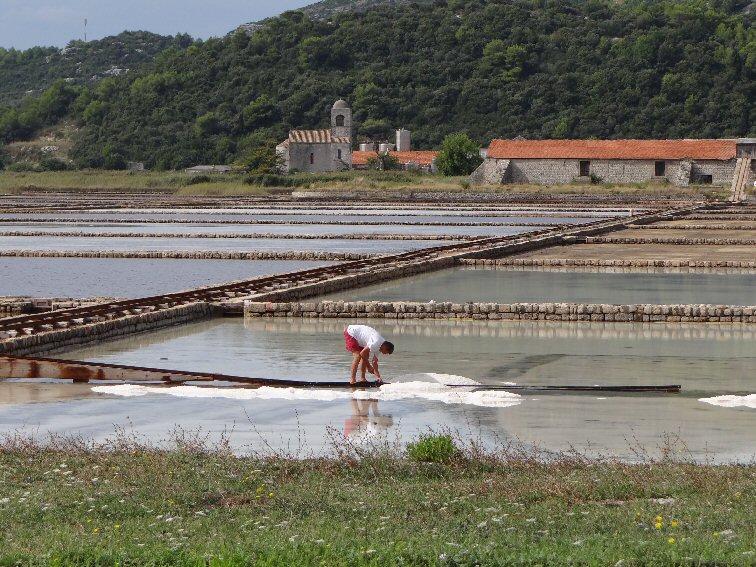 Worker at the ancient salt pans of Ston Heading
south-east along the western shores of the Pelječac peninsula, our next
destination was ambitious and required over eight hours of sailing
south
and, eventually, motoring north again as we entered the estuary leading
to the walled village of and ancient salt pans of Ston. Ston is
significant for two reasons:
1. The
mentioned salt pans that are still in use and pre-date Roman
times when salt was more valuable than gold, and 2. The westerly end of the so-called “Great
Wall of Croatia”, built in
the 14th century to prevent potential invaders from the east (i.e. from
the Ottoman empire) access to the Pelječac peninsula and the valuable
salt pans of Ston. This is the 2nd longest defensive wall in the
world after the Great Wall of China; it runs across the bottom of the
peninsula and connects to the castle and walls of the village of Mali
Ston (meaning “Little Ston”). Of course, we had to go to the top
and walk across to the other end of the wall – a long way up and a long
way down, more than enough exercise to earn our next bottle of
excellent Croatian wine!
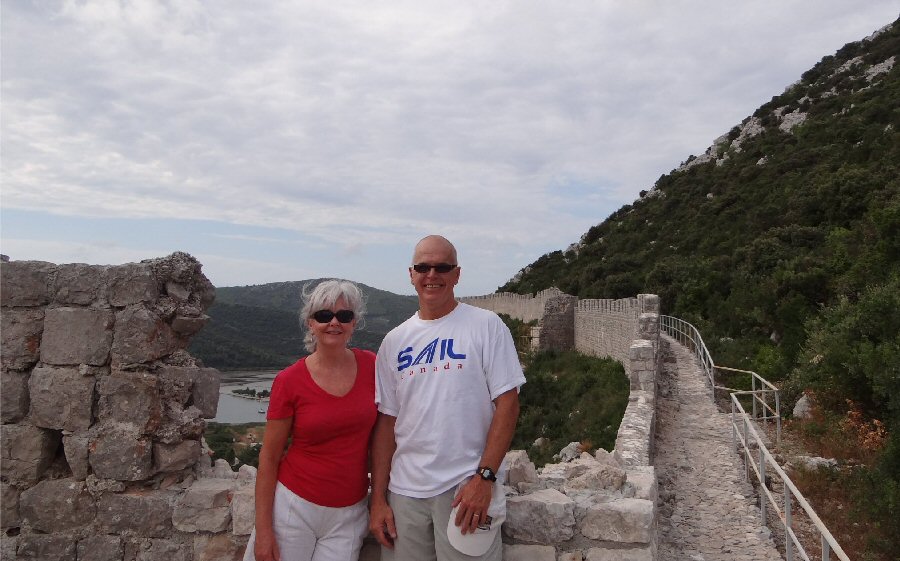 On top of the Great Wall of Croatia Ston was the
last of our nights on the boat. We celebrated in style on the
boat that evening with a fantastic array of food cooked with fresh
ingredients obtained at the street market in Ston. Leaving just
before noon on our final day, we had a three-hour sail against a
southwest wind blowing 15 knots to return to the harbour of Zaton from
where we had left what seemed like such a short while ago. The
cruise around the islands on Stane has left us with so many
excellent memories - majestic mountain landscapes, beautiful and wild
islands, quaint villages, wonderful food, friendly people, dolphins
swimming past, fish that would come to surface any place you threw down
bits of bread, lunchtime stops for swims, the fantastic blue colour of
the water, all capped by the solitude and peacefulness of much of what
we saw.
Will we return? We hope so. Meanwhile, we look forward to next spring when we will be taking part in the Hartley Boats Regatta, gathering with dinghy sailing enthusiasts at Beach Club Vounaki, located in Greece only 500 kilometres south of Dubrovnik. There we will get to sail “sports cars” on the Ionian Sea. Best regards, Dave
and Carol Hansman Dalmatian Coast http://www.dalmatiancoast.com/holidays/home.html Korčula http://www.youtube.com/watch?v=TpuLhyiVJck Dubrovnik http://www.youtube.com/watch?v=VjI9gsHOAA0 Super Yacht Eclipse http://www.superyachts.com/motor-yacht-4349/eclipse-specification.htm Hartley Boats Regatta http://www.hartleyboats.com/index.php?id=132 Beach club Vounaki http://www.onestopsailing.com/packages/greek-ionian-islands-beach-club-holiday |
